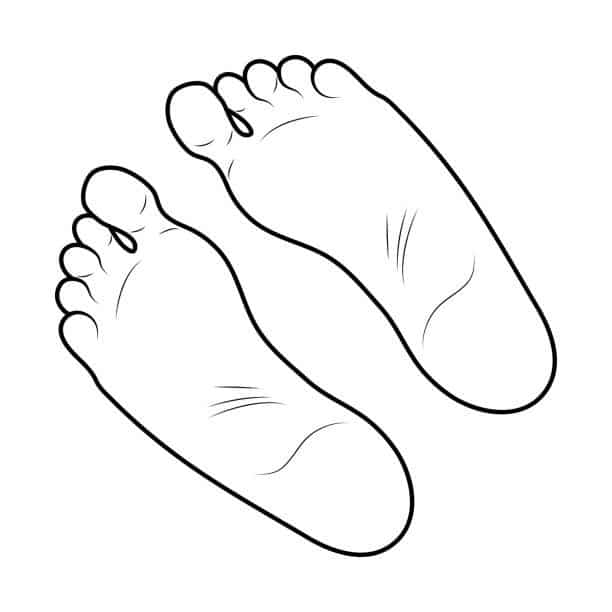If you’re not an artist, learning how to draw feet can be a very frustrating task. But the secrets to drawing perfect life-like feet is easily achievable with this guide.
In this piece, we’ll cover step by step process for drawing feet.
Table of contents
Materials For Drawing Feet
- Sketching Pencils: A range from 2H to 6B for varied line weights.
- Eraser: Both kneaded and standard erasers for precise corrections.
- Drawing Paper or Sketchbook: Choose a smooth surface to capture details.
- Fine Liner Pens: Ideal for outlining and adding intricate details.
- Blending Stumps or Tortillons: Perfect for seamless shading.
- Reference Material: High-quality images or anatomy books for accuracy.
- Work Surface: A comfortable and well-lit space to bring your art to life.
Tips For Drawing The Perfect Feet
- Start with Basic Shapes: Begin with simple shapes like circles and ovals to outline the general structure before adding finer details.
- Understand Perspective: Consider the angle and perspective of the foot to convey depth and realism in your drawings.
- Practice Foreshortening: Master the art of foreshortening to accurately depict feet from various angles.
- Pay Attention to Proportions: Ensure proper proportions by comparing the size of different parts of the foot in relation to each other.
How To Draw Feet?
Drawing feet can be a rewarding challenge when you get it right. Here’s a step-by-step guide to help you get started:
- Sketch Basic Shapes:
Begin by sketching simple shapes to outline the general structure of the foot. Use circles for joints and ovals for the main parts.
- Define the Anatomy:
Add lines to represent bones and joints, paying attention to the arch, heel, and ball of the foot. Study reference images to understand the anatomy.
- Outline the Foot:
Use a fine liner pen or a darker pencil to outline the foot, refining the shape and adding more detail. Be mindful of proportions and symmetry.
- Add Toes:
Extend the lines for toes, considering their length and spacing. Remember that toes aren’t always perfectly straight—they have subtle curves.
- Refine Details:
Add finer details such as toenails, wrinkles, and the contours of the skin. Take your time to capture the nuances that make each foot unique.
- Shade for Depth:
Introduce shading to create depth and emphasize the three-dimensional form of the foot. Use lighter and darker tones to highlight areas and shadows.
- Blend and Soften:
Use blending stumps or your fingers to soften transitions between light and dark areas. This adds a smoother, more realistic appearance.
- Check Proportions:
Regularly compare the proportions of different parts of the foot to maintain accuracy. Adjust as needed to ensure a well-balanced and realistic representation.
Frequently Asked Questions
Improving your foot-drawing skills involves studying anatomy, practicing regularly, and experimenting with different styles. Focus on proportions, shading, and paying attention to details.
Study the anatomy of the foot, use basic shapes to establish proportions, and pay attention to foreshortening. Regularly check and adjust proportions as you refine your drawing.
To depict movement, study the flow of the foot’s motion and incorporate dynamic poses. Experiment with different angles and consider the positioning of toes and joints.
Can I use a stylized approach in drawing feet?
Experimenting with stylized approaches is encouraged. Adjust proportions and details to fit your preferred artistic style while maintaining the basic anatomical elements.
Draw toes by extending lines from the foot’s structure, considering length and spacing. Add curves for a natural appearance, and pay attention to toenails and the subtle details of the skin.
Conclusion
Mastering the art of drawing feet is a journey that combines creativity, technique, and a deep understanding of anatomy. By properly learning the steps outlined, experimenting with various styles, and consistently honing your skills, you’re poised to create captivating and lifelike foot illustrations.
References
- gvaat.com – How to Draw Feet – the Easy Step-by-Step Guide
- zenartsupplies.co – How To Draw Feet Properly
- art-class.net – Learn To Draw Feet






